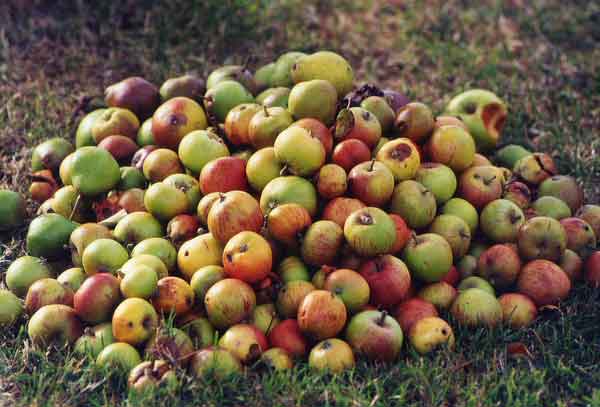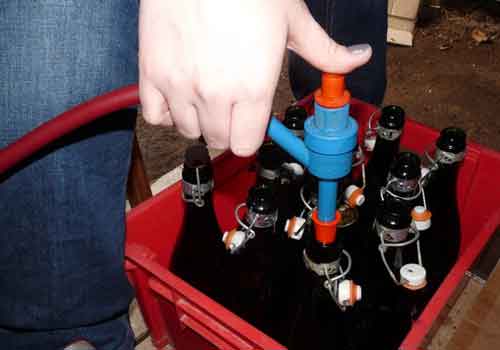Anyone can make cider at home. Just have some basic knowledge and you can get started. My father was cider maker for over 30 years and had a lot of experience in this field. Below on 3 pages everything you need to know. This text is taken from an interview that my father gave some time ago.
What are the basics to make a good cider?
Several things are important to make a good cider. First, you have to select several varieties of apples and mix them together, but at the same maturity.
The best is to use bittersweet apples found in Normandy with some sour apples to give strength cider. Not more than 5% of acid apples.
The best period to make cider is between September and December. Not before because it’s too hot nor after because of frost.
Another important thing for taste: do not mix varieties of early apples with late varieties.
The early apples are ripe in September and October, and late apples are ripe in November and December. You must pluck the apples by hand to avoid damaging them, and you would keep them 1 to 2 weeks outdoors on a grassy ground or in a shed without walls. The best is to make lots of 60 cm in height.

And before processing them, you must of course wash them.
How to transform the apples into cider?
There are several steps. After having washed the apples, pass them to the crusher. This produces pomace that you must leave to macerate for 12 hours.
During the maceration, the pomace takes color. It turns red. You must then press it to take the juice: the apple mash.
The apple mash is then fermented in a vat. This is called “tumultuous fermentation”. During the tumultuous fermentation, it is expected that the pectin of the apples coagulates to form a jelly on the surface, called here “the hat”. The tumultuous fermentation cider needs 48 hours, sometimes more.
After this, the cider maker will be able to squeeze out. He will extract the juice from the bottom of the vat. At this stage, the cider should be clear and must be free from impurities.
Then comes the decisive step, the “gentle fermentation” ou “alcoholic fermentation”. It takes several months. The juice will be stored and will change into cider. Indeed, the sugar within the juice will be converted into alcohol and in carbon dioxide under the action of the yeast. During this step, you have to store the cider in a room maintained at a constant temperature to prevent fermentation is too fast. The ideal temperature is between 10 and 15 degrees.

Now there is only to wait that the cider is ready to be bottled.
When do you know that you can put the cider bottle?
It’s simple, just monitor the fermentation using a hydrometer, which measures the degree of alcohol contained in the drum. This indicates whether the main fermentation is progressing well and when the cider can be bottled. The more the juice ferments quickly, the more the cider will be dry; and vice versa for a sweet cider.
My father was making rather dry cider (brut) and semi-dry.
Once bottled, the cider continues to ferment slightly and produces carbon dioxide (hence the bubbles). Gas pressure in the bottle stabilizes the fermentation.

It takes about two months after bottling the cider that is really good.
It’s your turn now !!!
Philippe Lechevallier
November 2nd, 2015
